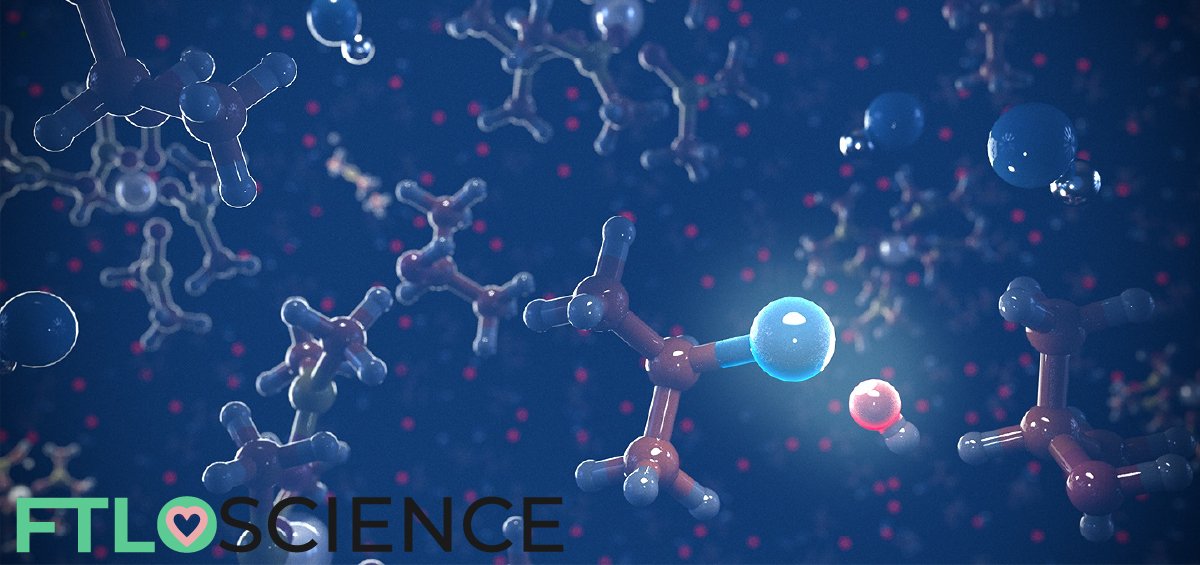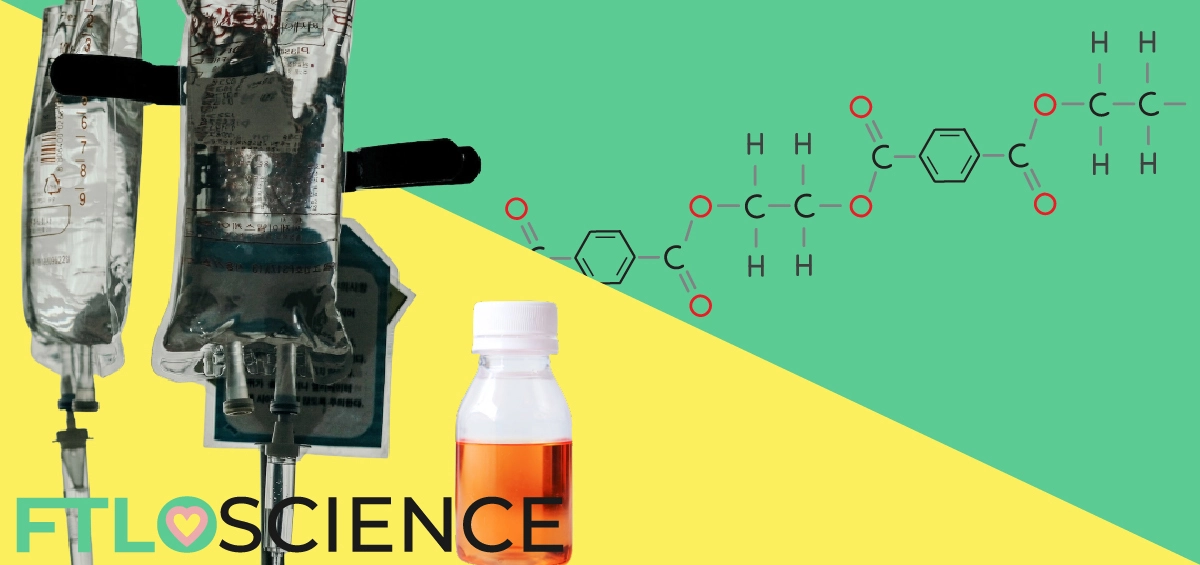‘If it dissolves, your problem is solved’—a simple adage many chemists live by. Identifying a solvent that can dissolve your substrates is a crucial step for any synthesis. In many reactions, solvents also play a significant role in forming the products. An understanding of the dielectric constant and solubility helps us better plan reactions, as well as improve on existing conditions and yields.
A solvent’s dielectric constant (ε) can help us predict how well a solute molecule will dissolve in it. As a general rule, if ε of a solvent is high, it is more likely to dissolve polar/ionic compounds. If ε is low, the solvent is more suited for dissolving non-polar (non-ionic compounds).
What’s in a Solution?
Solutes and Solvents
A solvent is a medium in which a reaction takes place, and takes up the bulk of the system (a container such as a beaker, or even a cell). In biological processes, for example, water is usually the solvent—that’s why we need to drink so much of it!
A solute is something that dissolves in the solvent. Usually, the solutes would be reactants in a chemical reaction, the stuff that you want to react to produce something new. Solids, liquids and even gases can be solutes, as seen in carbonated drinks where carbon dioxide is dissolved in water.

If the solute fully dissolves in the solvent they together form a solution. The partial dissolution of a solid results in a dispersion, in which small particles may be seen floating about. These particles can be so tiny that they might seem dissolved at first glance, requiring techniques like dynamic light scattering to accurately determine this.
Importance of Solubility
Solubility is defined as ‘the analytical composition of a saturated solution, expressed in terms of the proportion of a designated solute in a designated solvent’1. But why is it so important for the substrates to dissolve, anyway?
By definition, solids are energetically stable because of the bonds holding the molecules together. Remember that bonding between two molecules usually lowers their overall energy, resulting in a more stable system. Hence, bonding lowers the reactivity of all the molecules in a solid!
As a chemist, solids aren’t really that useful (except under certain circumstances). Because solids aren’t ‘free’ to move about in solution, only the surface molecules are able to react. By dissolving a solid, individual particles can spread through the solvent increase the overall surface area. This leads to better reactivity.
How Different Compounds Dissolve
Coulomb’s Law Holds Compounds Together
It can help to explain solubility if we classify compounds into ionic species and non-ionic species. By working through the fundamentals of chemical bonds, perhaps we can shed some light on the fascinating chemistry of dissolution.
We know that ions with opposing charges attract, forming electronically neutral ionic compounds. The individual ions that make up these compounds are able to dissociate in solution, releasing ‘free’ ions. However, this process of dissolution depends on the strength of the solvent to pull the ions apart.
We can use Coulomb’s law to explain the interaction between ions in solution:
F=k\frac{q_{1}q_{2}}{r^{2}}\\[0.1in]
k=\frac{1}{4\pi \varepsilon_{0}}=8.9875\:\ast \:10^{9}\:N\cdot m^{2}\cdot C^{-2}The force of attraction F between two ions depends on k (Coulomb’s constant, 8.9875 x 109 Nm2C-2), q1 and q2 (the electronic charges of the ions), r (the distance between ions). Coulomb’s constant also has the term ε0, which is the electrical permittivity in a vacuum. ε0 measures how strongly the separate ions are held together in a vacuum.
To obtain ‘free’ ions in solution, we first need to overcome the force holding them together (F). But what can help with this? Values of r, q1 and q2 are associated with the compound and cannot be changed. The only thing that we can vary is Coulomb’s constant, of which ε is the only variable.
Ionic Compounds and the Dielectric Constant
From Coulomb’s law, we can change the force holding ionic compounds together by removing it from a vacuum, which would change ε0 to ε. But what is ε?
The dielectric constant ε represents the bond strength between the solvent molecules themselves. This value has to do with electronegativity differences between atoms and the corresponding dipole that forms. If a solvent has a larger dipole moment, it will be more polar.
For example, Na+ and Cl– will have a certain force holding the ions together in NaCl. The forces holding NaCl together changes when it is removed from a vacuum and placed in different solvents. When it is placed in water (with a high ε), the attractive forces will decrease, dissolving the molecule. In hexane (with a low ε), this force increases, which results in low solubility.
Dipoles Hold Non-ionic Compounds Together
Before we get carried away with dipoles, let’s first look at non-ionic (or non-polar) compounds. Unlike ionic compounds, non-ionic ones do not have a formal charge. This makes Coulomb’s law unsuitable for describing their attractive forces.
They can, however, possess temporary dipoles. Electrons are never stationary, hence electron density is never stationary. Non-ionic molecules therefore can stick together through dipole interactions, differentiated from a formal +/- charges with a lowercase delta (δ). Attraction happens because of neighboring dipoles (δ+ and δ-) between molecules.
Even though we classify these forces as ‘weak’, breaking these compounds up is not as simple as we might think. We can see this in hydrocarbons, being notoriously insoluble in water and forming visibly distinct layers.
Entropy Considerations
The real driving force for the dissolution of compounds is entropy. We can think of this as how well molecules are spread out, and the 2nd law of thermodynamics tells us that entropy always increases. When a solid is put into a liquid, it wants to spread out to increase its entropy (i.e. dissolve).
In dissolution, this involves breaking the bonds between the solvent molecules themselves. This means a compound will dissolve if it can break the solvent-solvent bonds and form a compound-solvent bond with them instead!
Choosing a Suitable Solvent
Why is Solvent Choice Important?
A basic understanding of solubility provides us with a platform from which we can plan and predict reactions, especially when this knowledge is used in conjunction with existing literature.
In medicinal chemistry, for example, a certain extent of water solubility is required for a molecule to be biologically active. In ion exchange and some chromatography techniques, choosing a suitable solvent is arguably the most important aspect of the process.
If we can wrap our heads around the concepts of dissolution and the dielectric constant, we can now predict the ability of a solvent to dissolve compounds. As a rule of thumb, ionic compounds will dissolve better in solvents with a high ε value, while non-ionic compounds tend to prefer solvents with a lower ε.
List of Dielectric Constants of Common Solvents
Below is a list of solvents, their dipole moments and dielectric constants. You can see a correlation between its dipole moment and dielectric constant. This is because the dipole moment measures the imbalance in its electron density, which affects how strongly the solvent molecules bind to each other.

Hexane, with no dipole moment, has a low dielectric constant; this makes it a good solvent for non polar compounds. Water has a higher dipole moment and higher dielectric constant, making it a suitable solvent for polar compounds.
Rarely a Simple Solvent
Unfortunately, achieving solvation isn’t as simple as choosing a solvent with a suitable dielectric constant. There are other weak forces of attraction that, along with the dielectric constant, can change the behavior of the system. These include pi stacking, magnetic dipoles and hydrogen bonding.
The consequence of this is that in many chemical reactions, finding the perfect solvent remains very much a process of trial and error. Often, multiple solvents will be combined to form an optimal solvent system for a particular reaction.
In an ideal world, we’d have solvent systems that are cheap, non-toxic, and most importantly unreactive toward the reagents (otherwise, side reactions will occur). An efficient and environmentally-friendly solvent is also appreciated, abiding by green chemistry principles in synthesis. Happy hunting!
Cover graphic: artwork of DMSO solvent in a substitution reaction by Melanie (@nanoclustering)
Reference
- Wilkinson, A. D. M. A., & McNaught, A. (1997). IUPAC Compendium of Chemical Terminology, (the” Gold Book”). International Union of Pure and Applied Chemistry.
About the Author

Sean is a consultant for clients in the pharmaceutical industry and is an associate lecturer at La Trobe University, where unfortunate undergrads are subject to his ramblings on chemistry and pharmacology.




